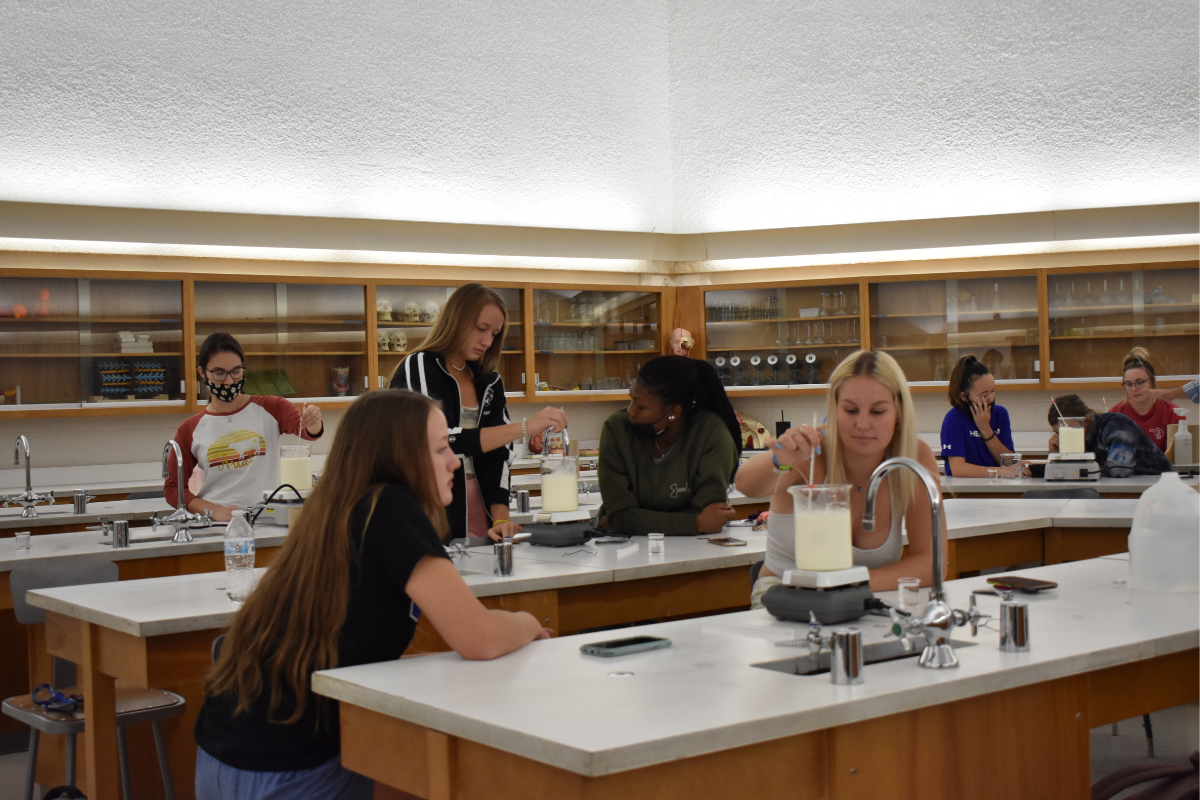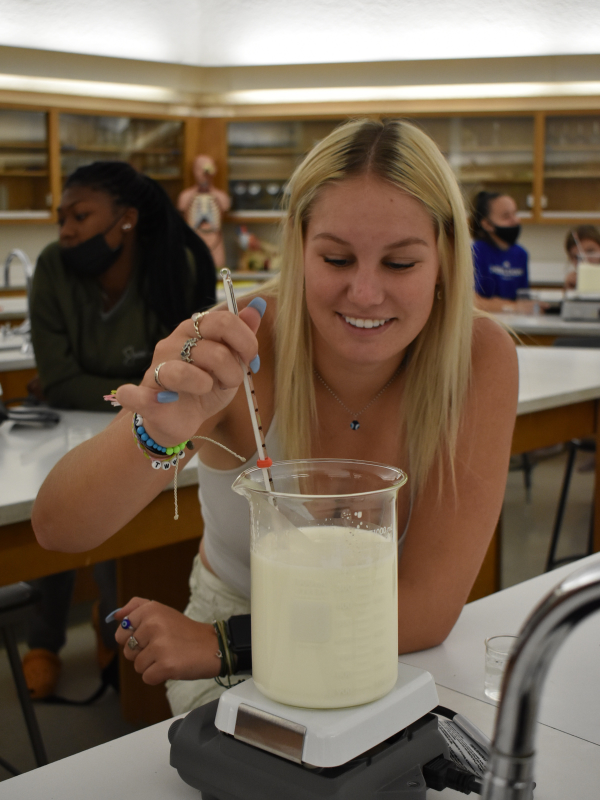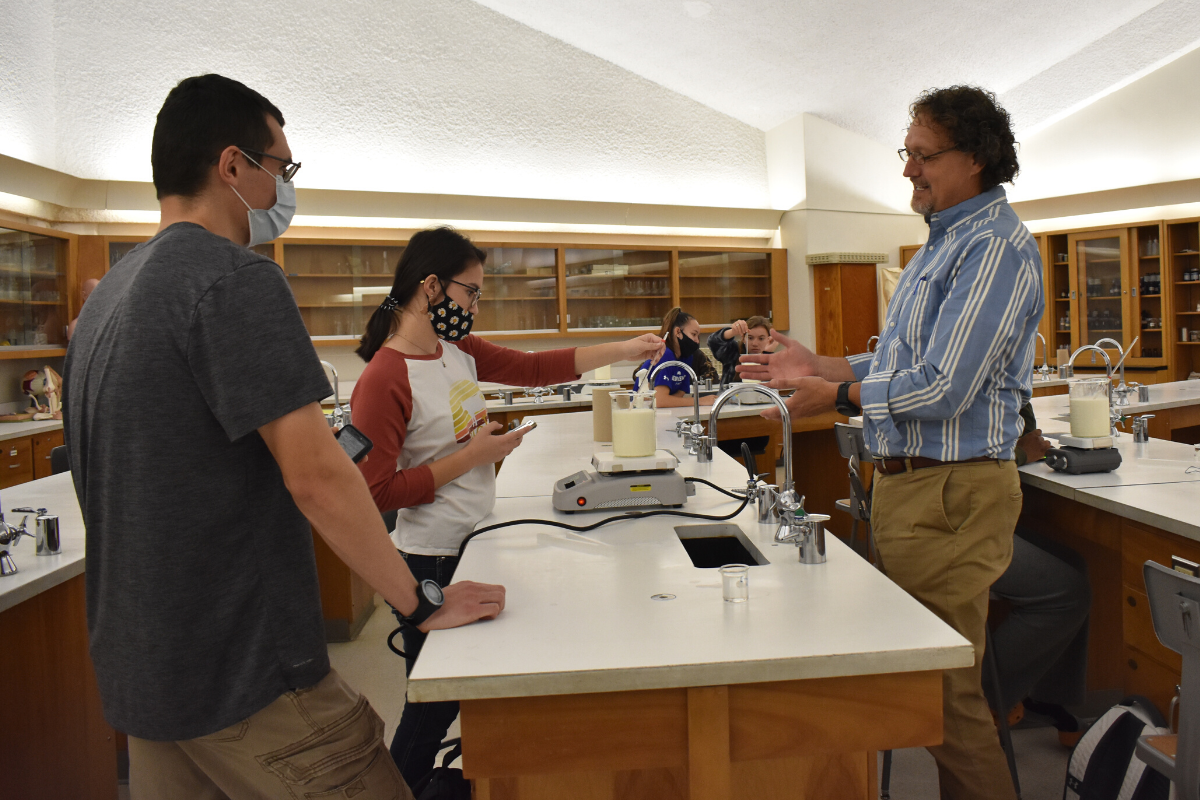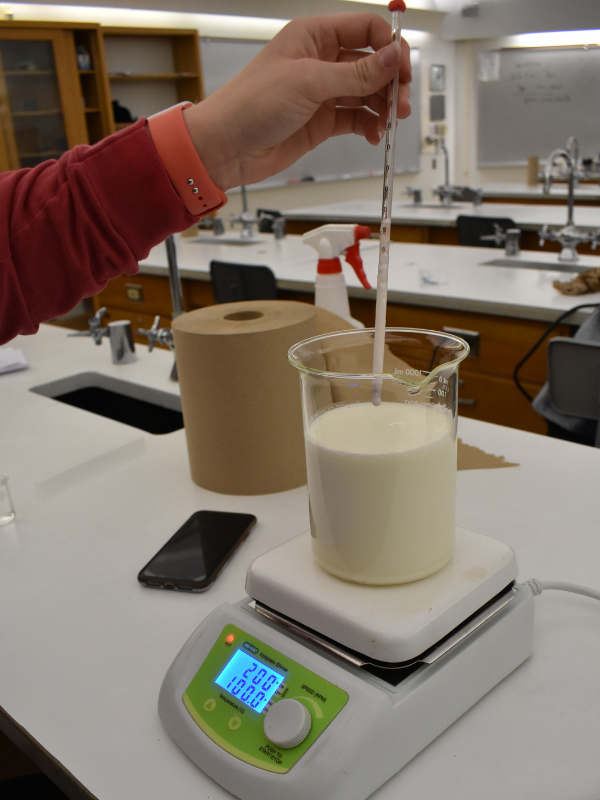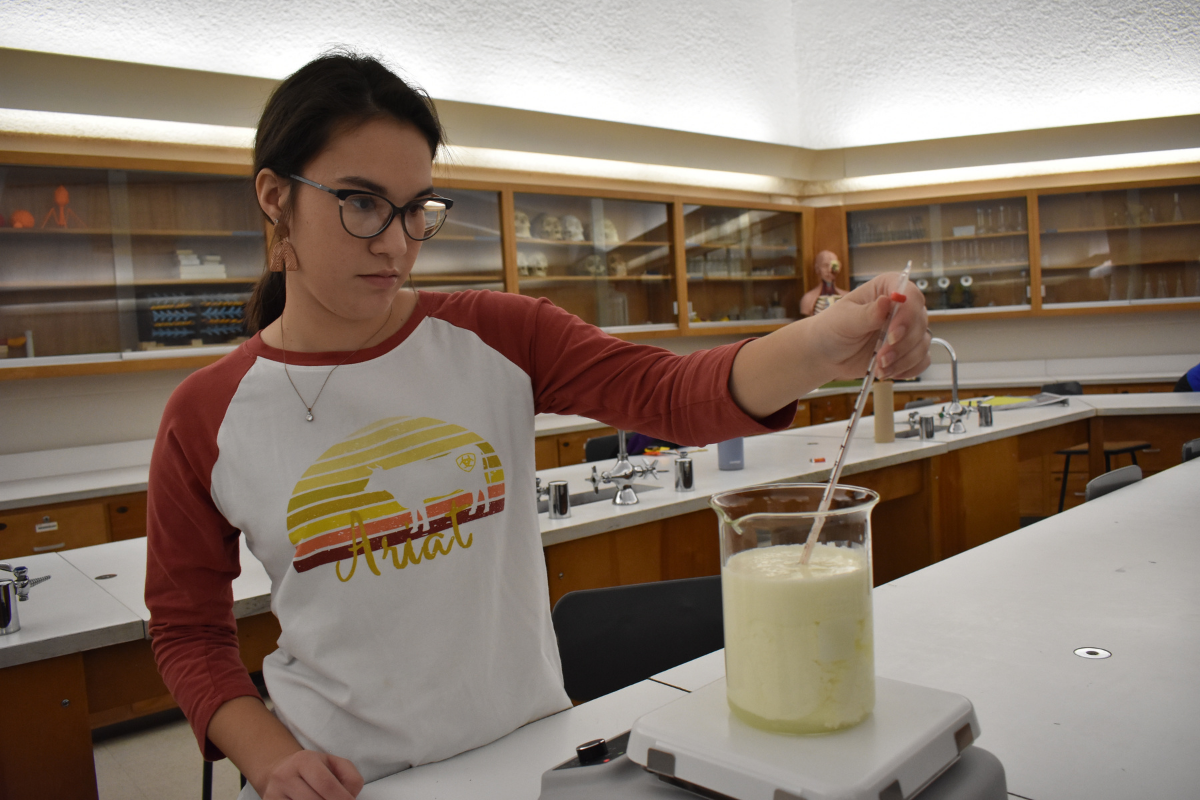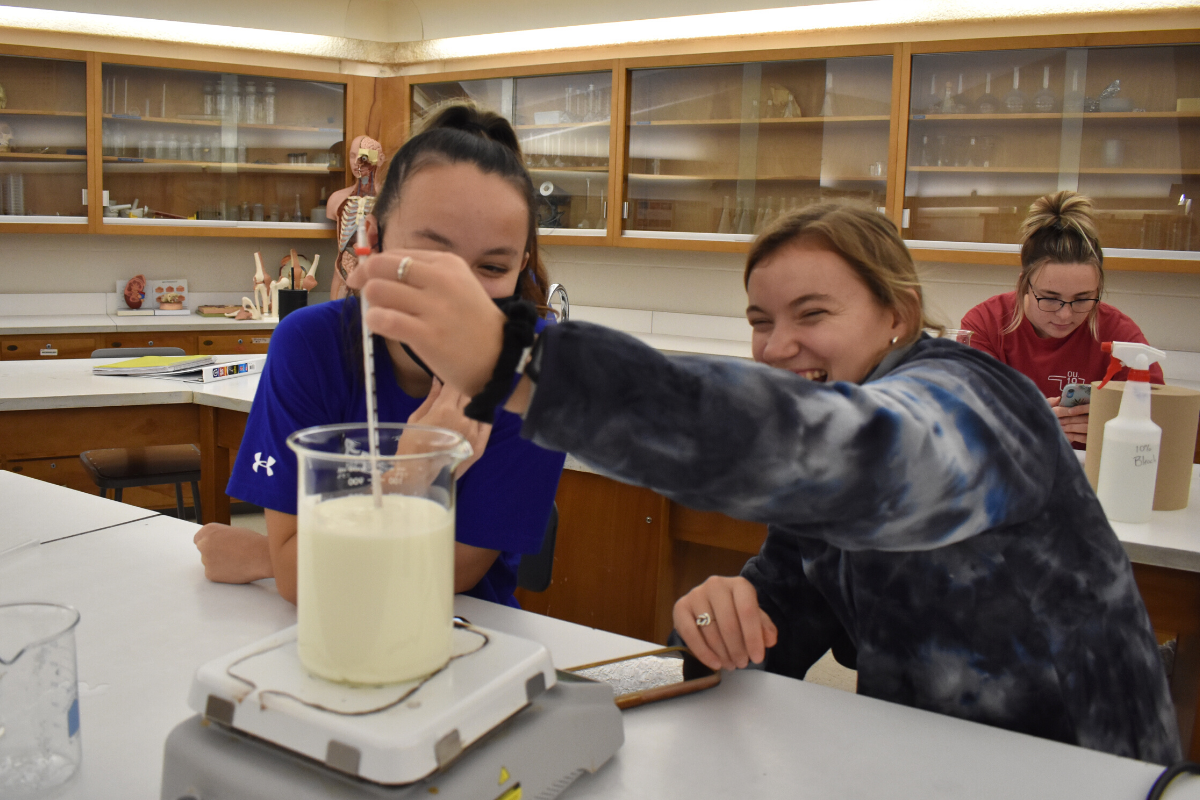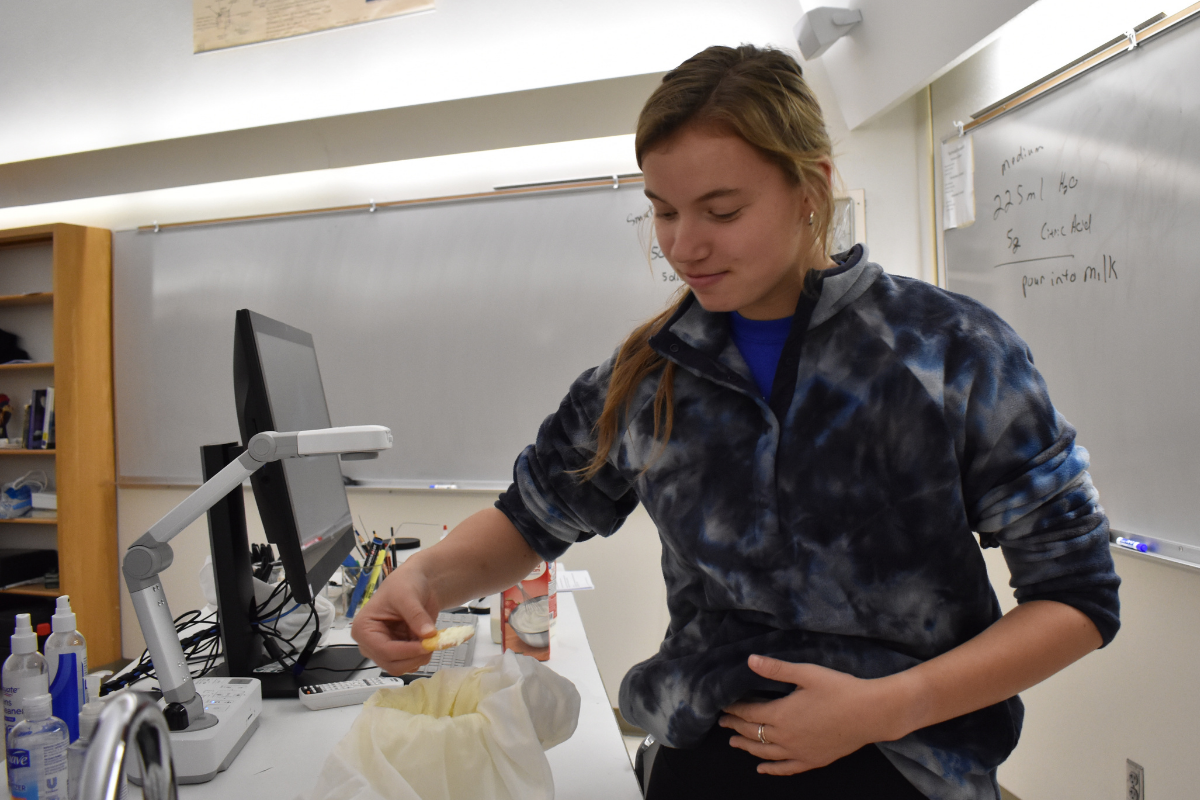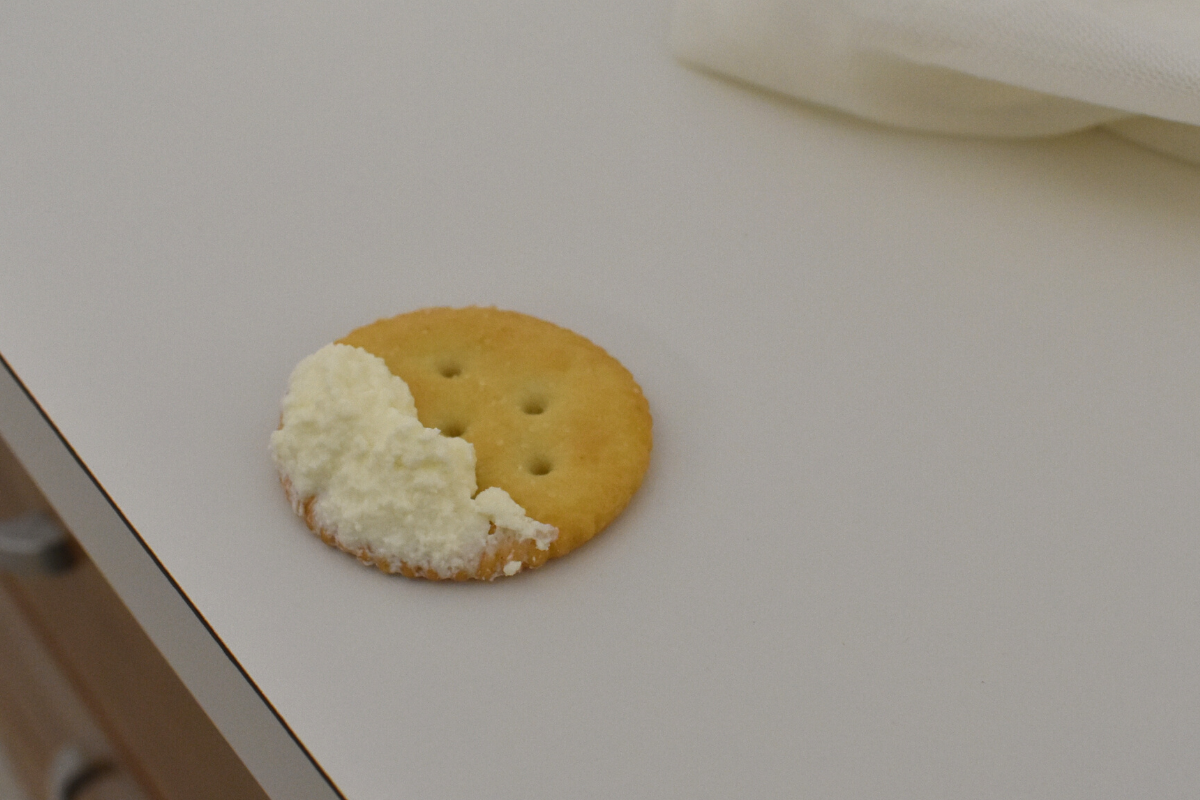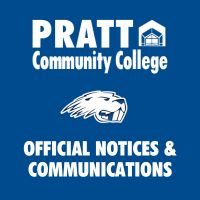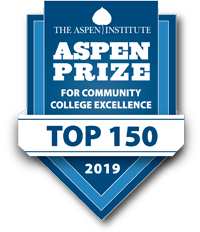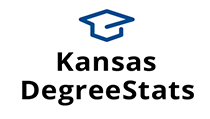
You never know what you’ll find inside a science lab on campus at Pratt Community College.
PCC Biology instructor and bacteria knowledge-connoisseur Jason Ghumm likes to keep it interesting and memorable for his students.
“We did a section over biotechnology with a subset of food microbiology. These are about how we use microbes to make products for consumption, industrial use, etc. We usually do a genetic engineering lab and make bacteria glow in the dark, but I wanted to try something different.”
An excellent way to use microbes in making products for consumption in a Biology lab? Making cheese!
Yes, cheese you can eat within about a half hour’s simple processing time with little fuss.
The ingredients used: whole milk, whipping cream, citric acid and rennet, a clear-liquid enzyme that acts upon proteins in milk.
The first ingredients were added to beakers and heated to certain temperatures over a certain period of time before adding rennet in the final stage, to slowly curdle and separate the mixture into “cheese”.
After reaching a soft state that resembles ricotta cheese, the mixture is poured through a cheese cloth and squeezed to drain off the liquid.
And voila’, you can spread the finished product onto a cracker and eat it.
There were mixed reactions and varied willingness about digging in to sample the cheese. Mr. Ghumm jumped right in and described it as warm, buttery and creamy.
“All of the students were nervous about trying their cheese, but each said it was better than they thought it would be. Each ate multiple crackers with cheese.”
Ghumm shared that this is the same technique large cheese-producers use to make large batches of their product, with varied ingredients for different flavors and textures.
Intrigued to learn more about science experiments? Watch this cool Science Show our science instructors put on for an area grade school!
